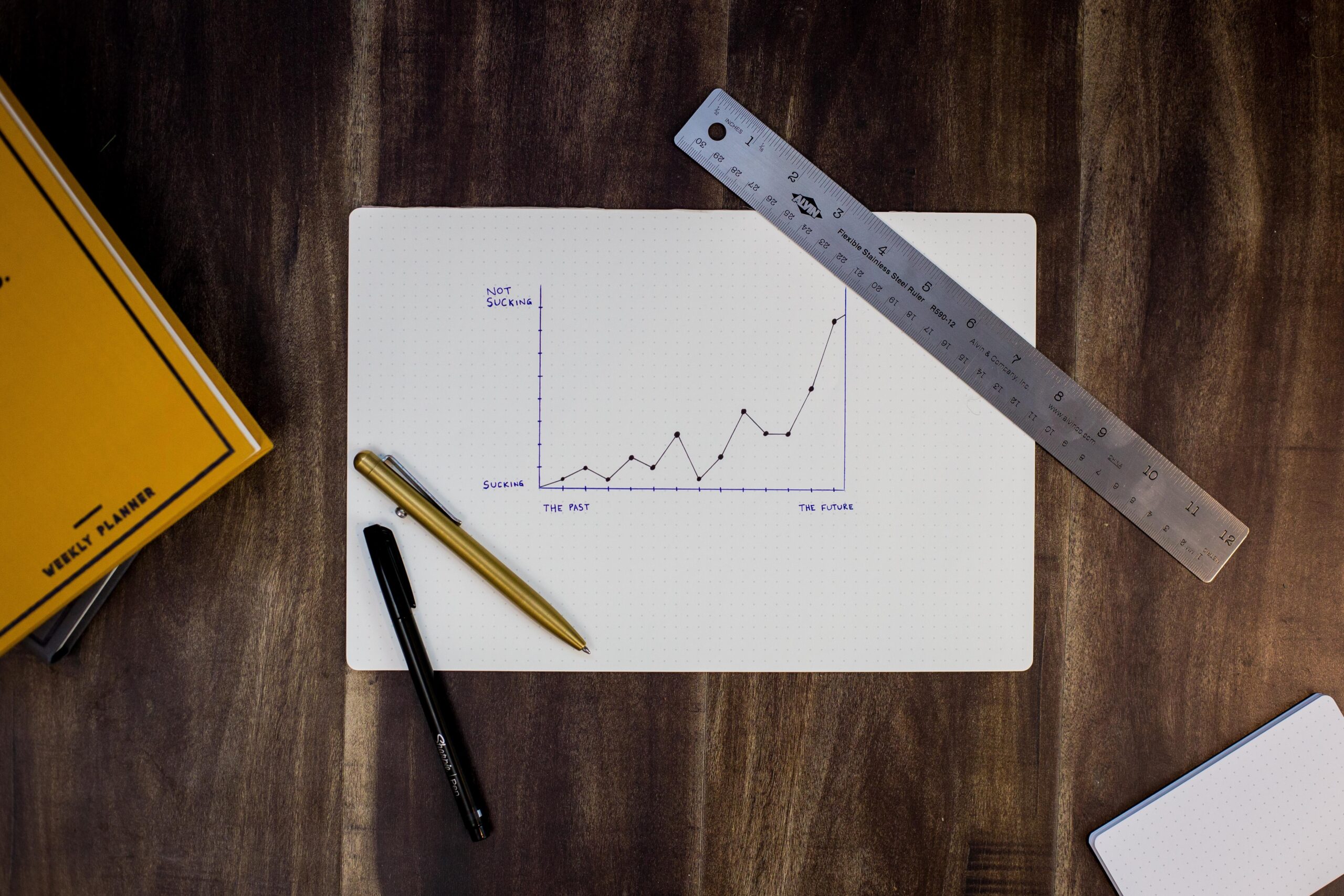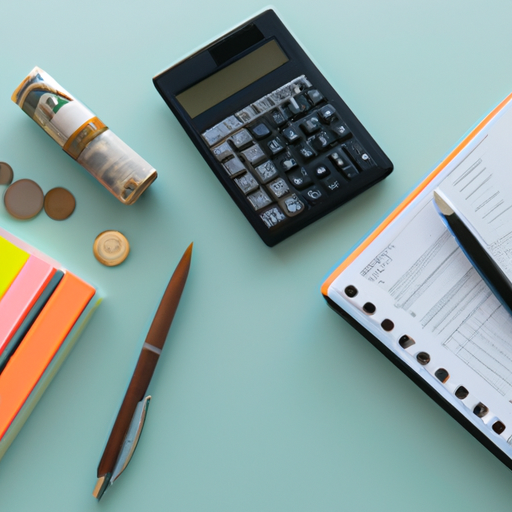Tracking your expenses is crucial to staying within your budget. Understanding how you spend your money allows you to make informed decisions and identify areas where you can cut back. By consistently monitoring your expenses, whether through a budgeting app, spreadsheet, or even a notebook, you can gain control over your finances and work towards achieving your financial goals. In this article, we will explore various methods and tools that can help you effectively track your expenses and stay on track with your budget.

Check out our Recommend Products
1. Set Up a Budget
Setting up a budget is the first step towards managing your finances effectively. By creating a budget, you can gain control over your income and expenses, and ultimately achieve your financial goals. To begin, you need to determine your income and identify your expenses.
1.1 Determine Your Income
Start by calculating your total monthly income. This includes your regular salary or wages, as well as any additional sources of income such as freelance work or passive income from investments. Make sure to consider the after-tax amount to get an accurate picture of your available funds.
1.2 Identify Your Expenses
Next, it’s important to identify all your expenses accurately. Begin by listing all your fixed expenses, which are the consistent bills or payments you have to make each month. These may include rent or mortgage payments, utilities, insurance premiums, and loan repayments.
Once you’ve listed your fixed expenses, consider your variable expenses. These are the costs that may fluctuate from month to month, such as groceries, transportation, entertainment, and dining out. It’s important to be as thorough as possible when identifying your expenses to get a comprehensive understanding of your financial obligations.
2. Categorize Your Expenses
To track your expenses effectively, it’s helpful to categorize them into essential and non-essential expenses. Categorizing your expenses allows you to prioritize your spending and make informed decisions about where you can potentially cut back.
2.1 Essential Expenses
Essential expenses are the necessary costs that you must pay to maintain your basic needs and fulfill your obligations. These may include housing, utilities, groceries, transportation, healthcare, and debt repayments. It’s important to allocate a sufficient portion of your budget towards essential expenses to ensure your basic needs are met.
2.2 Non-Essential Expenses
Non-essential expenses are the discretionary costs that are not necessary for your survival or financial obligations. This category includes expenses such as dining out, entertainment, vacations, shopping, and hobbies. While these expenses can bring joy and enrichment to your life, it’s crucial to prioritize your essential expenses before allocating funds to non-essential areas of your life.
3. Choose a Tracking Method
Once you have set up your budget and categorized your expenses, it’s time to choose a tracking method that works best for you. There are several options available, ranging from spreadsheet tools to budgeting apps or even the simplicity of pen and paper.
3.1 Spreadsheet Tools
Spreadsheet tools, like Microsoft Excel or Google Sheets, offer a flexible and customizable way to track your expenses. You can create your own budgeting template or use pre-made templates available online. Spreadsheets allow you to easily input your income, categorize expenses, and calculate totals and variances.
3.2 Budgeting Apps
Budgeting apps have gained popularity in recent years, as they offer convenience and automation. There are numerous apps available, such as Mint, YNAB (You Need a Budget), and Personal Capital. These apps often sync with your bank accounts and credit cards, allowing you to track expenses automatically. They also provide visual charts and graphs to help you visualize your spending patterns.
3.3 Pen and Paper
If you prefer a more traditional approach or have a simpler budgeting situation, using pen and paper can be an effective method. Simply create a budgeting notebook or use a dedicated page each month to record your income and expenses. You can categorize your expenses manually and calculate totals and variances at the end of each month.
4. Record Your Income
To accurately track your expenses, it’s essential to record your income diligently. Tracking your paychecks and any additional income sources ensures you have complete visibility of your financial situation.
4.1 Track Your Paychecks
Record each paycheck you receive, including the net or after-tax amount. If you have a regular salary or wage, this step should be relatively straightforward. However, if you have irregular or freelance income, make sure to record each payment you receive.
4.2 Include Additional Income Sources
In addition to your regular paychecks, be sure to include any extra sources of income you receive. This may include rental income, dividends from investments, or side gig earnings. By accurately documenting all your income sources, you’ll have a comprehensive overview of your financial resources.

5. Track Your Expenses
Now that you have your tracking method in place and your income recorded, it’s time to focus on tracking your expenses. By diligently monitoring your spending, you can identify areas where you may be overspending and make necessary adjustments to stay within your budget.
5.1 Collect Receipts and Invoices
A practical way to track your expenses is to collect and retain all your receipts and invoices. Whether it’s from your grocery shopping, utility bills, or any other payment, keep a dedicated folder or envelope to store these documents. At the end of each month, go through your receipts and invoices and record the expenses in your chosen tracking method.
5.2 Log Cash Expenses
For cash expenses, it’s important to develop a habit of jotting down each expenditure as it happens. Carry a small notebook or use a notes app on your phone to record these transactions. Be thorough and include even the small purchases, as they can add up over time.
6. Automate Expense Tracking
To streamline your expense tracking process and minimize manual effort, consider automating certain aspects. This can save you time and ensure you don’t miss any transactions.
6.1 Link Bank and Credit Card Accounts
Many budgeting apps allow you to link your bank and credit card accounts, automatically importing your transactions. By connecting your accounts, you can conveniently track your expenses without manually inputting each transaction. However, it’s crucial to review the imported transactions regularly for accuracy.
6.2 Set Up Automatic Expense Import
Some budgeting apps also offer the option to set up automatic expense import for recurring payments. This feature automatically categorizes and logs expenses like rent, utilities, and subscription services. By utilizing this automation feature, you can save time and ensure all your recurring expenses are accurately recorded.

7. Analyze Your Spending
Regularly reviewing and analyzing your expenses is an essential step towards improving your financial habits and staying within your budget. By understanding your spending patterns, you can identify areas for improvement and make informed decisions about your future expenses.
7.1 Review Your Expenses Regularly
Set aside dedicated time each month to review and analyze your expenses. Look for any trends or patterns in your spending that may be causing you to exceed your budget or neglect essential savings. By identifying these patterns, you can take proactive steps to adjust your spending habits.
7.2 Compare Actual Spending to Budgeted Amounts
Compare your actual spending to the budgeted amounts you initially set. This allows you to see if you are on track or if adjustments need to be made. It’s normal for expenses to fluctuate each month, but significant deviations from your budgeted amounts may indicate the need for adjustments or additional budgeting categories.
8. Identify Areas for Improvement
As you analyze your spending, you may come across areas where you can improve your financial habits and reduce unnecessary expenses. Identifying these areas is crucial for staying within your budget and saving money in the long run.
8.1 Identify Overspending Patterns
Take note of any recurring patterns in your expenses where you consistently overspend. This could be excessive dining out, impulsive shopping, or entertainment expenses that exceed your budgeted amounts. Once identified, brainstorm strategies to curb these habits and find more cost-effective alternatives.
8.2 Find Opportunities to Cut Expenses
Look for opportunities to cut expenses without sacrificing your basic needs or quality of life. Consider negotiating bills and subscriptions, finding cheaper alternatives for groceries, or reducing discretionary spending in non-essential categories. By consciously making these adjustments, you can allocate more funds towards savings or other financial goals.

9. Adjust Your Budget as Needed
A budget is not a static document; it should be flexible and adaptable to your changing financial circumstances and goals. As your income or expenses change, make necessary adjustments to your budget to ensure it remains realistic and achievable.
9.1 Make Necessary Changes
If you experience significant changes in your income or expenses, such as a new job, salary increase, or large unexpected expense, make the necessary changes to your budget. This may involve revisiting your allocation of funds, adjusting your savings goals, or reallocating money between different categories.
9.2 Reallocate Funds
Periodically reassess the effectiveness of your budget allocation and reallocate funds if needed. As your financial priorities and goals evolve, you may find it necessary to shift funds from one category to another. Be proactive in adjusting your budget to reflect your current circumstances and aspirations.
10. Seek Support and Accountability
Managing your finances and staying within your budget can be challenging at times. It’s important to seek support and accountability to help you stay on track and achieve your financial goals.
10.1 Enlist a Financial Accountability Buddy
Find a friend, family member, or partner who can act as your financial accountability buddy. Share your budgeting goals and progress with them, and ask them to check in regularly to ensure you’re sticking to your budget. This external support and encouragement can make a significant difference in maintaining your financial discipline.
10.2 Join Online Communities or Support Groups
There are numerous online communities and support groups focused on personal finance and budgeting. Joining these communities can provide valuable insights, tips, and motivation from individuals who are on a similar financial journey. Engaging with like-minded individuals can boost your motivation and provide additional resources to help you stay within your budget.
In conclusion, tracking your expenses to stay within your budget requires setting up a comprehensive budget, categorizing your expenses, choosing a tracking method that suits your preferences, recording your income and expenses diligently, automating where possible, analyzing your spending, identifying areas for improvement, adjusting your budget as needed, and seeking support and accountability. By following these steps, you’ll be well on your way to managing your finances effectively and achieving your financial goals.





